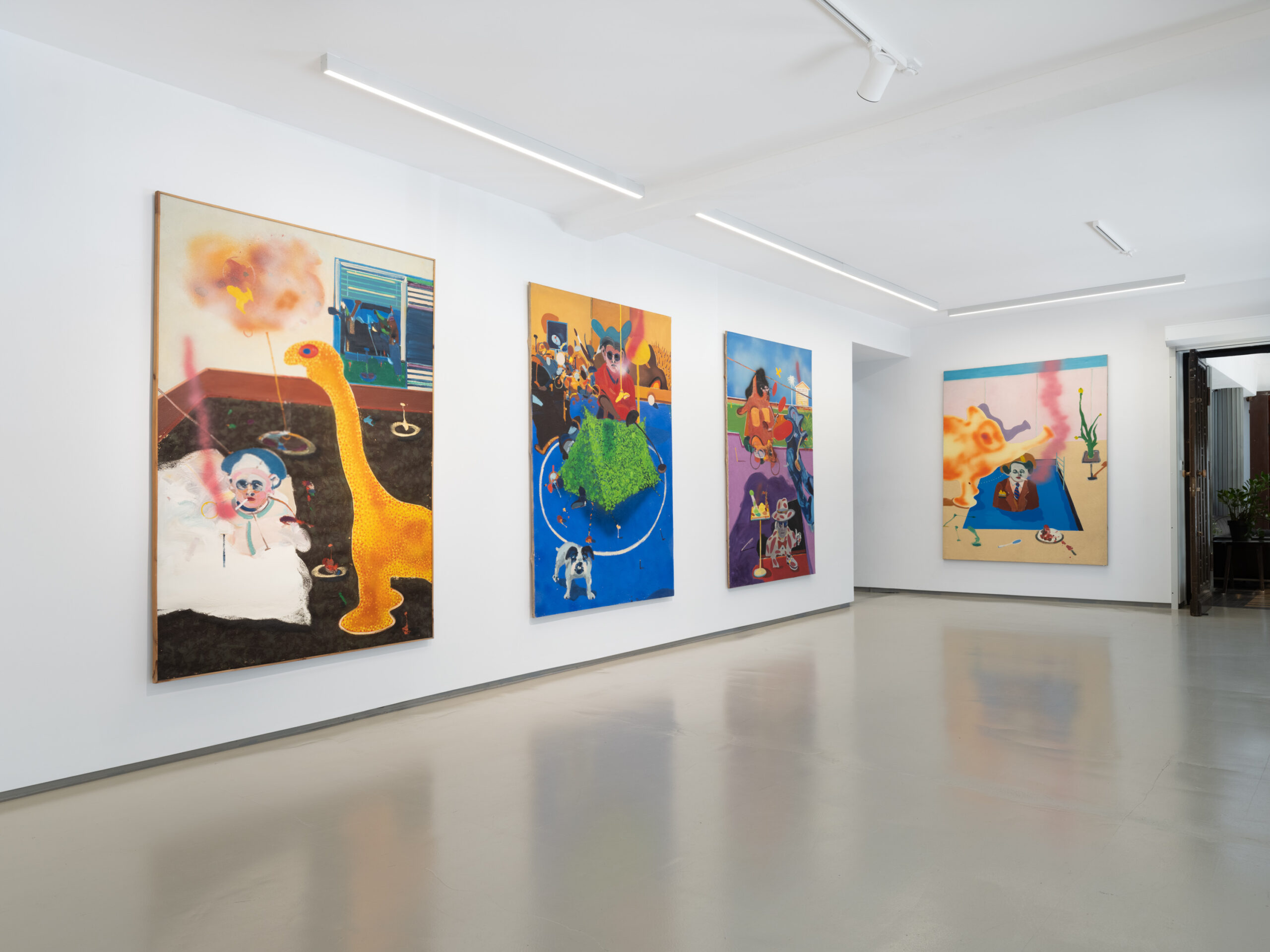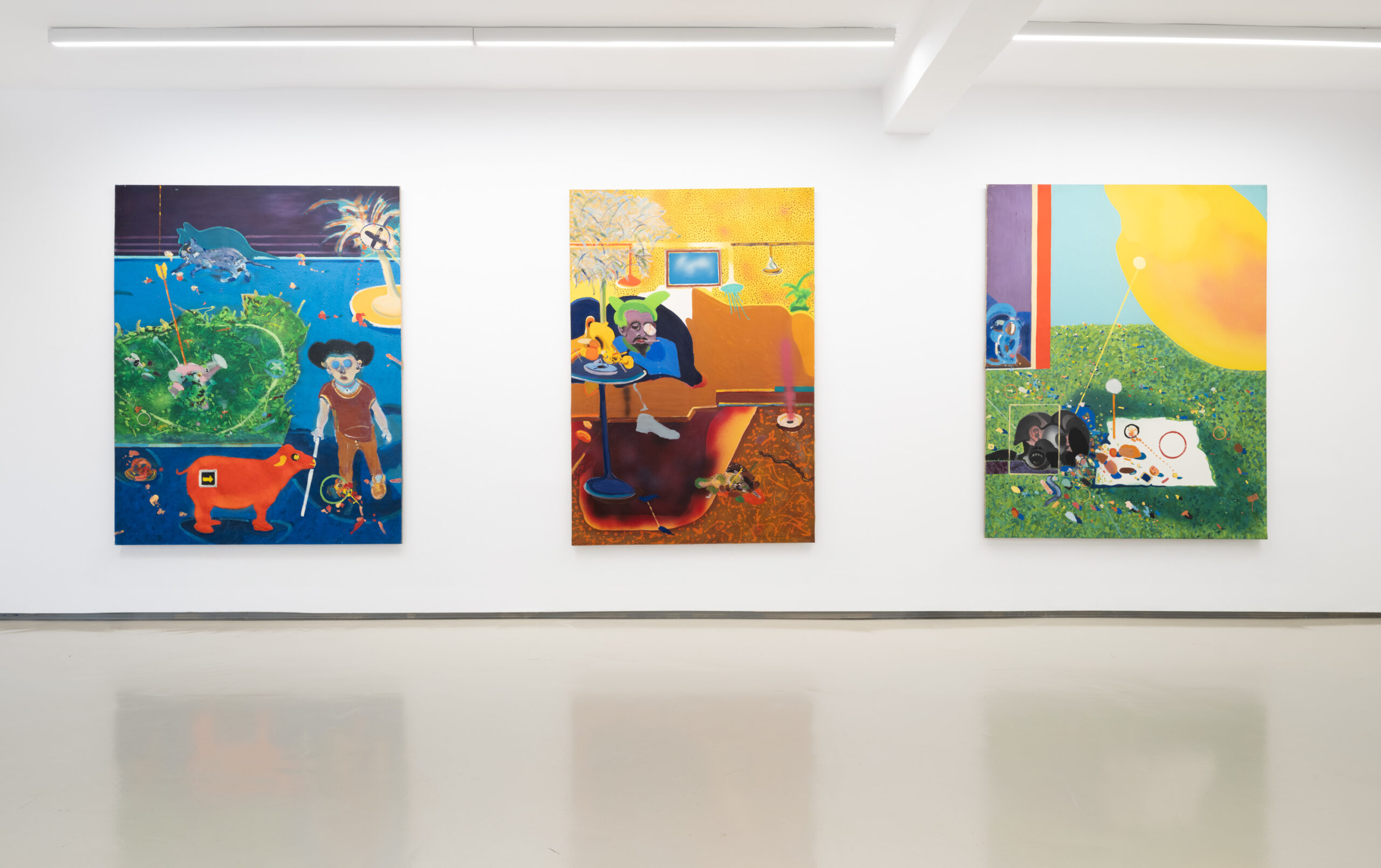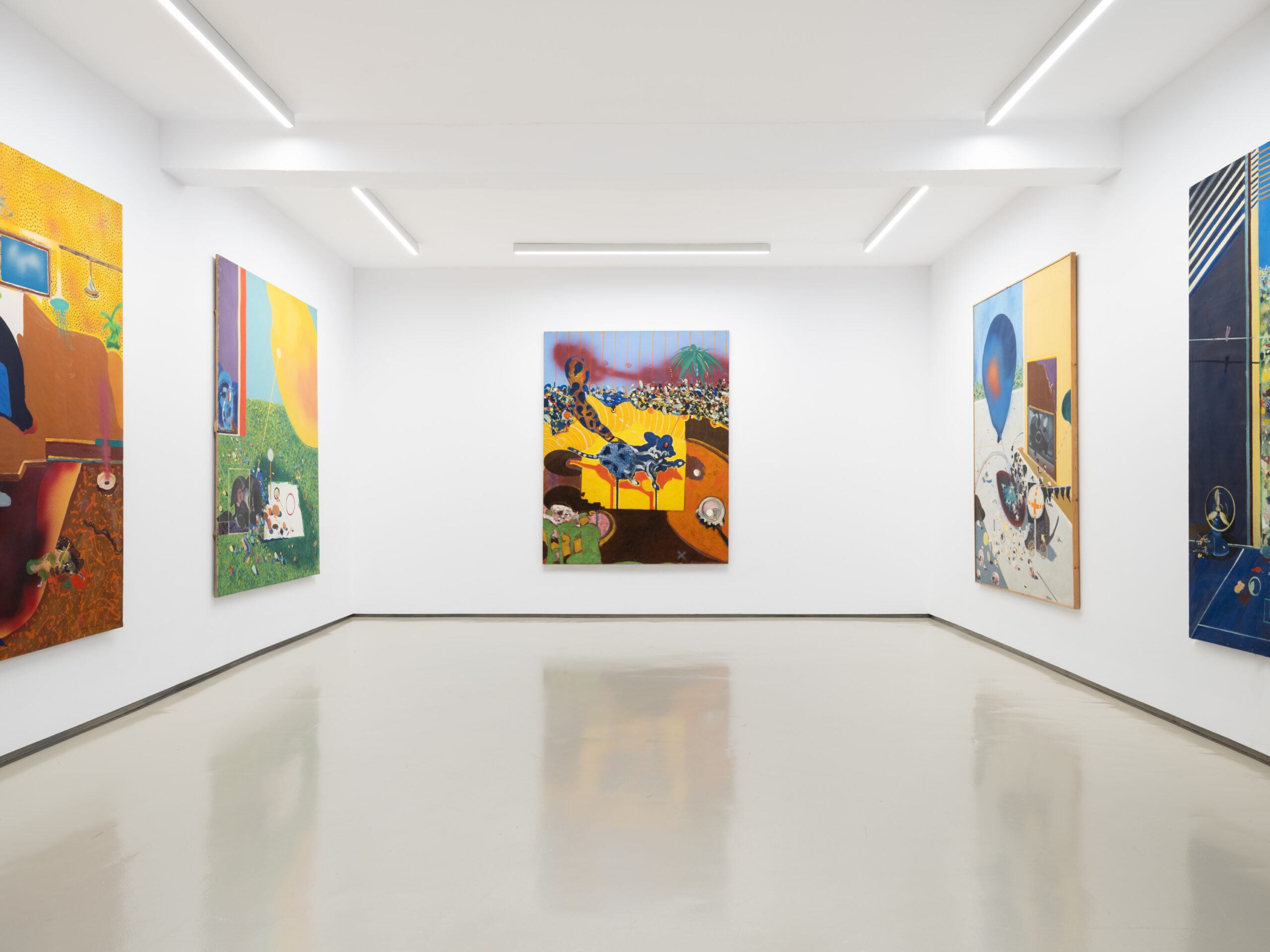Łukasz Korolkiewicz
Bait
May 25 – July 27, 2024
We see a leashed animal similar to a cat or marten, a mirror reflecting someone’s wailing mouth, and the shadow of a figure in the background. Along the right-hand edge are scattered objects difficult to identify, which resemble the remains of food after an all-night feast. In the top right corner a penis can be seen, as if suspended on a pink string. The whole scene takes place on a tennis court. It is the 1973 painting Bait by Łukasz Korolkiewicz, which gave its name to the exhibition. The picture contains elements characteristic of the artist’s work of that time, yet we do not know which element is the eponymous bait. Maybe our guesses are right, or maybe the lure here is something that refers us beyond the surface of the canvas. Is it also, by any chance, a metaphor for the artist’s strategy still present in his works?
The paintings shown in the exhibition were created between 1972 and 1975, a period when conceptualism dominated the art scene. Korolkiewicz understood the contemporary artistic trends well, but he remained faithful to painting. While still a student, he would browse Art in America or Das Kunstwerk. There he came across reproductions of works by Richard Hamilton, among others, as well as articles on performance and happening. Although he himself sometimes used the latest ephemeral art forms, only some of the artist’s actions were documented photographically.
Łukasz Korolkiewicz’s paintings from the early 1970s drew on the film, literature and music of the time since the budding painter had been shaped by the culture and iconosphere of the late 1960s. In his paintings, we can clearly discern afterimages of film noir, echoes of his literary fascinations or reverberations of progressive rock, as the titles also suggest. Perhaps this is why he is sometimes referred to as a pop artist, although the boundary between Korolkiewicz’s figuration and pop art was marked by the Iron Curtain, which definitely could not stop the curiosity of the young Korolkiewicz.
He painted vigorously at the time, the canvases filled quickly and intuitively, usually at night with artificial light and loud music in his studio in Saska Kępa. They featured recurring images of young adults, caricatured representations of children smoking cigarettes, often dressed in suits and chic hats. The depicted settings resembled American suburbs, modern flats, or enclosed spaces, perhaps modelled on the artist’s room, which was filling up with new works. Images steeped in the absurd and grotesque, however, were not intended as ironic variations on consumerism or Western lifestyles. They appeared on the canvas like subconscious echoes of absorbed words, sounds and images. Korolkiewicz built a chaotic structure in them, a kind of narrative composed of specific characters, enigmatic props and dreamlike stage designs.
This is the first time the artist’s paintings from that period have been exhibited as such a selected body of work since their creation. They both express the zeitgeist and provide material testimony of the era when Korolkiewicz made his début. Was figurative painting then a bait for the artist? This type of painting was then rarely chosen by academy students and dismissed by most of the art milieu, while carefully examined by the censors. Didn’t he himself begin to use his works to lure us, the spectators, who from the outset have been absorbed by the impenetrable aura and obscure meanings of his paintings?
Franciszek Smoręda





